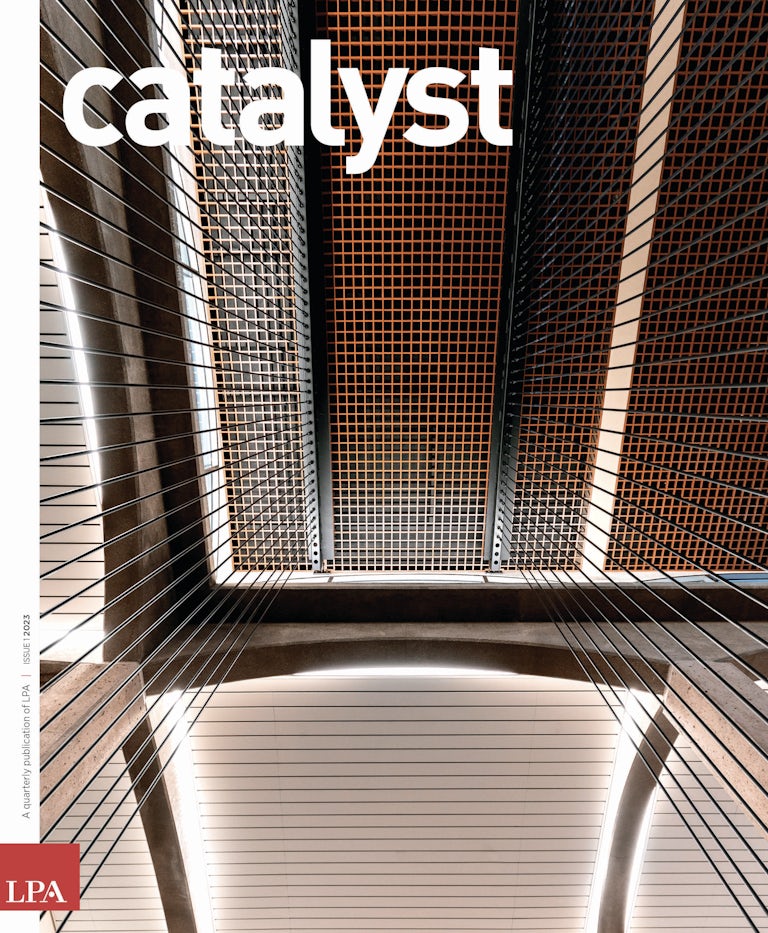For the Rev. Harvey L. Vaughn III, developing supportive housing for veterans and seniors on underutilized church land makes sense for his congregation and the community.
In Southeast San Diego, LPA is working with Bethel AME Church of San Diego to develop a three-story, net zero energy, permanent supportive housing project for veterans and seniors on church land. The 26-unit project, which is under construction, is designed to serve as a model for cost-effectively developing secure, healthy environments for populations badly in need of support.
In an interview with Catalyst, the Rev. Harvey L. Vaughn III, the church’s pastor, discusses his congregation’s approach to housing and the keys to developing a successful project.
Why was this housing project the right choice for you and your congregation?
As I started getting more and more data about the lack of quality affordable housing in San Diego, that became the opportunity. We want to do good for our congregation and community, and we want to do well. We’re filling the void.
What have you learned about developing housing?
If you’re a pastor of a church, you can’t even consider building if you don’t have buy-in from your congregation. For a church or regular developer, I would say you need to have a great team around you. That’s been very critical.
How did you decide to focus on and prioritize veterans and seniors?
When you look at the demographics, we were looking at trying to affect the affordable housing market and address underserved populations. San Diego has a lot of retired veterans, and we discovered that several of the people that are in the homeless population are also veterans. Our congregation has a lot of active and retired military, and so that was pretty easy. The second demographic is our seniors. We decided, okay, let’s take care of two segments of our population that are underserved and people that we certainly should be giving quality, safe, clean and affordable housing. They deserve it — our seniors and our veterans.
You have to be patient. Even once you get your plan submitted to the city, getting through that is a whole other situation. What I would suggest to anyone who is even thinking about developing, you have to have a great team around you.
How did knowing that from the start affect the design?
Everything inside is being designed so that it will be handicapped accessible. Something as simple as the tubs may have a roll-in shower. The other thing that we’re doing is we partnered with the VA to provide wraparound services. Every veteran will have an assigned counselor to work with them, and housing specialists will also be available.
What did you like about the design process?
What I like about the design aspect is that I’ve been able to have a conversation with Matt [LPA Director of Mixed Use Matt Winter] and his team and I may say, ‘Okay, here’s what I’m envisioning. This is what I’d like for it to look like. Here’s what I have in my imagination.’ Matt would just start writing notes and say, ‘I hear what you’re saying, Pastor. We’re going to get back to you.’ He took my ideas and what I was visualizing, and he put it on paper. He would come back and say, ‘How about we do this? And we can consider doing this and moving things around to make it work for what we’re doing.’ That’s what I really enjoyed. It’s been pretty amazing.
What kind of advice you would give to other developers approaching this kind of development?
You have to be patient. Even once you get your plan submitted to the city, getting through that is a whole other situation. What I would suggest to anyone who is even thinking about developing, you have to have a great team around you. Matt’s relationship with the city and the work that they’ve done — when you mention them or when their renderings go to the city, they’ve seen their work. They know that it’s going to be what it needs to be. Right away we’re ahead of the game. There’s a level of confidence that what they’re submitting is going to be what it should be. That’s very important.
What would you say to churches and congregations with land contemplating this type of project?
I would say it’s a tremendous opportunity for congregations to generate an income stream that is not associated with the offering plate. Even with that, you would have to have some business-savvy persons involved that clearly understand and are thinking long term. And that’s how we need to be thinking, because what we’re putting in place is really going to help secure this congregation for years to come. That’s the way we’re looking at this — it’s another revenue stream. We can put this money into an endowment, and as long as we keep the principal in place, we can pay off the interest and it will benefit the community and the congregation for the long haul.
















